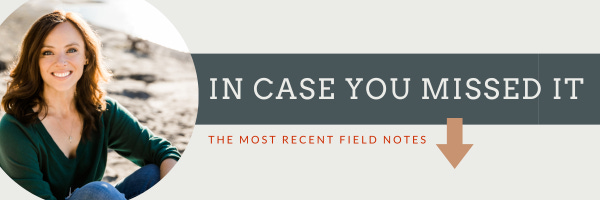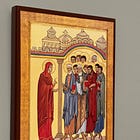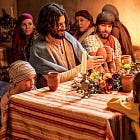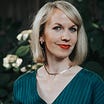Note: In the interest of sensitivity for those who find the topics of birth, pregnancy, and loss to be tender ones, what follows explores those topics, so please take care of yourself.
Hi friends,
In our latest Field Notes survey, the majority of you expressed a desire for occasional guest essays from trusted writers or leaders to mix things up a bit around here. Today will mark the beginning of this occasional guest feature1 with a beautiful essay from editor, writer, and friend of the newsletter, Stephanie Duncan Smith.
Stephanie has been a well-loved and trusted editor for many years in my writing circles (if you are a writer yourself, please do yourself a favour and subscribe to her Substack at
for invaluable wisdom about the craft of writing). Her own very first book called Even After Everything: The Spiritual Practice of Knowing the Risks and Loving Anyway2 was released a couple of weeks ago.I just nicely finished reading it myself and, if the sheer number of dog-ears and underlined passages are any recommendation, then I think it’s safe to say that I found it beautiful, strong, and resetting in the best ways. It’s a journey through the Church calendar through the lens of her experiences with pregnancy, loss, birth, and the expansion of love. This essay will give you a glimpse into that work through the lens of Advent’s incarnation.
Her book - and this essay excerpt - speaks so beautifully of possibilities, of the invitation and danger when it comes to love through the medium of story. As she writes, “In the beginning of all beginnings, God is a woman swaying her hips with hope, a woman who says, “Let us stretch. Let us risk. Let us make room.” She stretched and she stretched until her capacity was wide as the night, holding every human soul in the spaciousness of her belonging.”
I know that so many of us are taking the risk of love right now in so many different ways; I hope this essay and her book meets you in that place of expansion, risk, love, and danger, too.
Love S.
My Books | Field Notes | On Instagram | On Facebook | SarahBessey.com
The Most Powerful Muscle in the World
By Stephanie Duncan Smith
In the final weeks and days leading up to my due date of my daughter, I considered the womb—at its most basic definition—as a muscle. And not just any muscle. We know muscle, the ribbed force of tissue fibers whose design it is to contract and relax. Through these rhythms, our strength is practiced.
What is less known, and rarely acknowledged, is that the uterus is the most powerful muscle in the human body. The uterus exerts more pressure than any other muscle—it is the only one that possesses the power capable of bringing a new human into the world.
And its power is an unsung wonder. Prior to pregnancy, the uterus is approximately the size of a closed fist. Over the course of pregnancy, this circular organ expands and expands and expands to achieve what no other muscle can claim: stretching its capacity to five hundred to a thousand times its pre-pregnancy size.3 At the time of birth, the uterus weighs approximately two pounds, yet its strength reaches mysteriously beyond itself to push out a baby three to five times its own weight.
What other soft tissue asks so much of us? What other muscle so dramatically alters the borders of the self?
The ask is exponential. And yet it is outrageously commonplace: The only reason any of us got here is because someone braved their yes to so radical an ask. “When we give birth, we do so from our core,” I underlined in my pregnancy book, with awe and no small amount of terror. “Not just the core of our bodies, but the core of ourselves.”4
Every muscle gains its strength by pushing back against the natural law of gravity. But none so much as this muscle, which pushes back against the entropy of all things to proclaim, in the resonant words commonly attributed to Maya Angelou, “Here comes life.”
Where entropy declares our destiny is to be laid low, labor is a fight through water, blood, breath, and spirit to say otherwise. For all of death’s gravitational pull down to dust, every muscle-powered contraction pushes back in counterargument: Today, a story begins.
In the beginning of all beginnings, God is a woman swaying her hips with hope, a woman who says, “Let us stretch. Let us risk. Let us make room.” She stretched and she stretched until her capacity was wide as the night, holding every human soul in the spaciousness of her belonging. And so the circle of the Trinity expands. God is not just with-child, but with-cosmos. Her heart quickens when she thinks of them one by one: Beloved, Beloved, Beloved. In Advent, we hear the ancient echoes of this genesis: Here comes life.
Scholar and theologian Phyllis Trible writes in her trailblazing study that the Hebrew words for “womb” and “mercy” share the same root, are kindred at an etymological level. “In its singular form the noun rebem means ‘womb’ or ‘uterus,’” she writes. “In the plural, rabamim, this concrete meaning expands to the abstractions of compassion, mercy, and love.”5
Like the widening circles of a stone skipped across a lake, like a muscle that stretches its capacity a thousand times over, mercy is known by its expansiveness. By its encompassing inclusivity, the sweep of every human care in the history of time under a gentle wing.
Trible calls it God’s “womb-love,” mercy, a circle where God has always held space for us. “The womb protects and nourishes but does not possess and control. It yields its treasure in order that wellness and whole-being might happen. Truly, it is the way of compassion.”6
Truly, the most powerful muscle in the world. This “womb-love” of God can be traced in a continuous thread from the Old Testament into the New Testament, where we find Jesus using birth language as a primary paradigm for salvation. To enter the Kingdom, Jesus tells the inquiring Nicodemus, one must be “born again” ( John 3:3–8). It’s a vivid image: God as one who carries, labors, and gives birth.
If Advent begins with the body of a woman, we are wise to consider what its incarnation asks of our bodies, our lives. This story tells of God making radical room for creation, and Mary making radical room for God—surely this is the way of love, and love now calls to us. Far from what the surface sentimentality of the season would suggest, to let love be formed within you is inevitably an intimate transformation. It does not merely touch you, as if a gentle hand brushes one’s back, it alters your very composition—a change of deep tissue, interior nerve. To let love be formed within you is the bold consent to change shape, to undergo a transformation that is nothing less than the rearrangement of vital organs, of inner life as much as embodied self. Such transformation is the very work of incarnation.
In the stable’s dark of that night long ago, Mary’s body becomes the first table. Long before Jesus said, “This is my body, broken for you,” Mary’s body broke for him. Long before the first baptism, it was Mary’s water that broke. The cup of her womb, having been so blessed and lifted up, is now poured out. It is the salt of her sweat and blood upon the hay. It is her offering, “Take and eat,” to a newborn God, who will one day make this very offering to the world. She is the one who showed him how. And we are the ones still receiving this gift. The first Eucharist is sacrament given by none other than a woman.
“Heaven cannot hold him,” we sing in the Christmas carol “In the Bleak Midwinter,” but Mary’s muscle will. And we hear the echo of her exponential yes in all of us, in all the places where we stretch to make room for love.
Stephanie Duncan Smith is a senior editor at HarperOne, the creator of the Substack newsletter Slant Letter for writers, and the author of just released Even After Everything: The Spiritual Practice of Knowing the Risks and Loving Anyway, from which this is excerpted.
Right now I’m thinking we’ll feature a guest essay every other month or so, meaning about six times a year, but we shall see.
Her book is available everywhere books are sold or borrowed but today, I’ve linked to Indie Bookstores here in Canada. If you wish to find it at Bookshop.org - which connects American readers to their own local indie bookstores - here’s that link: Even After Everything.
F. Gary Cunningham et al., eds., “Maternal Physiology,” chap. 4 in Williams Obstetrics, 25th ed. (New York: McGraw Hill, 2018), https://obgyn.mhmedical.com/content.aspx?bookid=1918§ionid=144754618
Diana Spalding et al., The Motherly Guide to Becoming Mama (Boulder, CO: Sounds True, 2020), 345.
Quoted in Elizabeth Johnson, She Who Is (New York: Crossroad Publishing, 2017), 101.
Phyllis Trible, God and the Rhetoric of Sexuality (Philadelphia: Fortress Press, 1978), 33.











I'm going to say this in the most loving and gentle way that I can: I barely read past the second paragraph because "undisputed biological fact" sounds like a dog-whistle for transphobia.
I don't know if the guest author is transphobic or if she is aware of what she sounds like. I will not assume intent about the author. I'm commenting because I read the second paragraph as transphobic and I am assuming that Sarah Bessey wants to learn about and from her Queer readers. I'm commenting because I am trying to use my voice as a cis woman to educate where I can so that our trans siblings don't have to.
As a birth doula and as a cis woman who is trying to conceive, I have a lot of experiences with the most powerful muscle in the world, and I'm going to dispute this "undisputed biological fact." Not all women have a uterus; not everyone who has a uterus is a woman.
I'm a big fan of the uterus. I'm hoping that my own uterus grows and births a child very soon. I also love my trans family and I refuse to be quiet about it.
Sarah, I hope you can read this as a kind message from a concerned reader. I desperately want to assume the good about you and about Stephanie, and at the same time, I *have* to speak up for my trans siblings, especially one week out from the US presidential election.
I've read and reread my own comment here, hoping that my concern and goodwill are coming through. My hope is to expand our embraces to include {not as an afterthought} our trans siblings.
What could be more sacred than Mary’s womb expanding to give us Jesus, a teenager, a child, the mother of our Yahweh🩷. Thankyou